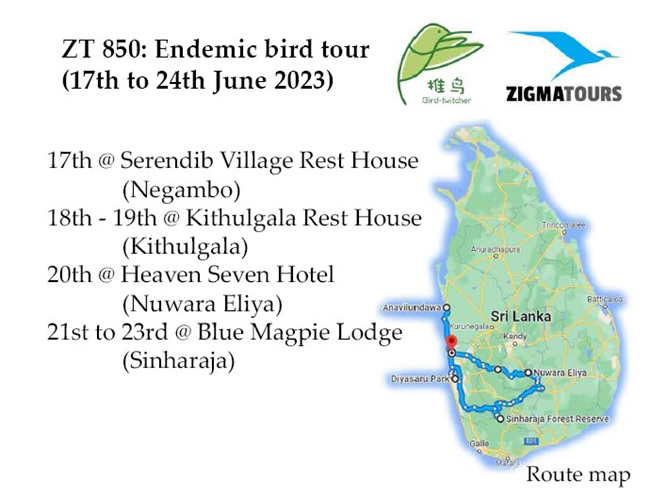
Tour Period: 17th – 24th of July 2023
Team: China Bird Twitcher
Team Size: 6 Members
Day 01: 17th of July
Early in the morning around 0545h the team Zigma Tours reached the airport to welcome the bird watching team to Sri Lanka. At around 0630h Mr. Liu Jianguo, Mr. Yin Li, Ms. Bao Dongni, Ms. Liu Zhuo and Ms. Fan Wenjing were warmly welcomed by the operation director Zigma Tours, the travel wing of the ECOARCH.
Since the entire Chinese bird watching team is fully enthusiastic about bird watching, we directly travel to Colombo, the world’s first RAMSAR wetland city to observe birds at Diyasaru wetland park. We were able to enter the wetland park at 0700h with superb timing of our tour driver Mr. Priyantha. Our team begins to excite by looking at wetland birds such close proximities where you can photograph a Lesser-whistling Teal at the distance of 5 m.
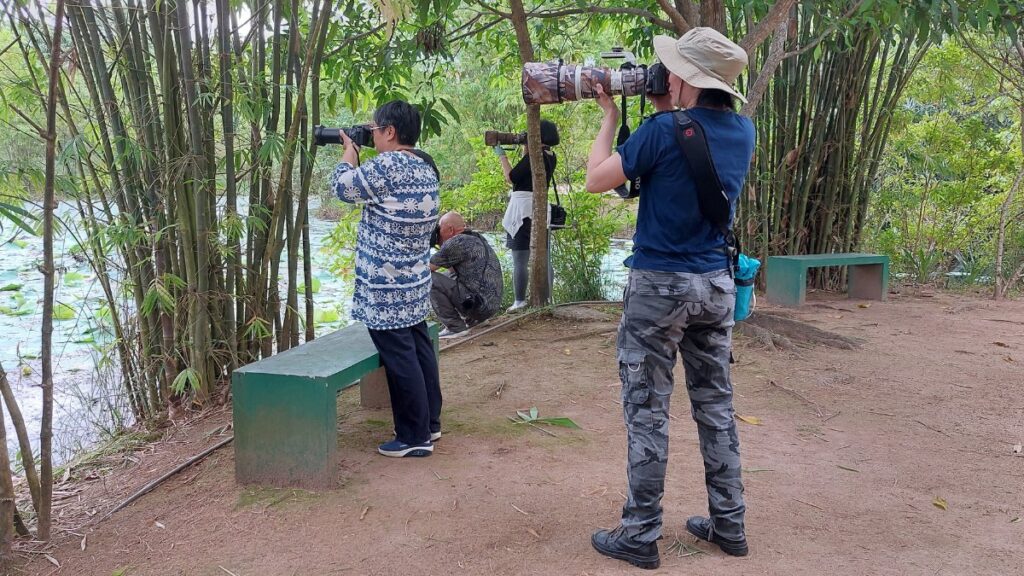
Actually, the Diyasaru wetland park is a brilliant location to start a birding tour if you are in Colombo. We spent there for nearly 3.5 hours yielding 39 species of common wetland birds and other wetland and urban associated birds with superb photographic opportunities. Here our birding group ticked their first endemic bird in Sri Lanka the Sri Lanka Barbet.

After spending much time on birding, we got our breakfast at Bakery at The Lake where our clients got firsthand experience in Sri Lankan traditional food, milk rice “Kiribath” with spicy “Lunumiris”.
It was a late breakfast and then we left Colombo to check at Serendib Village Rest House. After a 2 hour rest, we then moved to Anawilundawa Bird Sanctuary, another Ramsar site. At this site our team was able to see not only birds but also butterflies and some common mammals. We considered Anawilundawa as one of our locations to target Sri Lanka Wood shrike but we were unable to spot one at this location.

There were plenty of opportunities to capture stunning photographs including sunset at this location and around 1830h we left the site to return to Negombo. On the way back we were able to spot an electrocuted Grey Slender Loris (Loris lydekkerianus), a nocturnal small primate in the dry zone of Sri Lanka.
Then we returned back to the hotel where we spent that night it was a nice location with a small canal flowing aside of the hotel because of that our clients were able to photograph the biggest kingfisher in Sri Lanka the Stork-billed Kingfisher, further we were lucky enough to observe the mating of White-throated Kingfisher at the next morning.
Day 02: 18th of July
Serendib Village Rest House is a cool and nice hotel perfect for bird watchers who need to hang around in the Negombo area. You can see common birds including White-throated Kingfisher, Stork-billed Kingfisher, Rose-ringed Parakeet and Oriental Magpie Robin while enjoying your breakfast. After a delicious breakfast we left Negombo to Kithulgala.

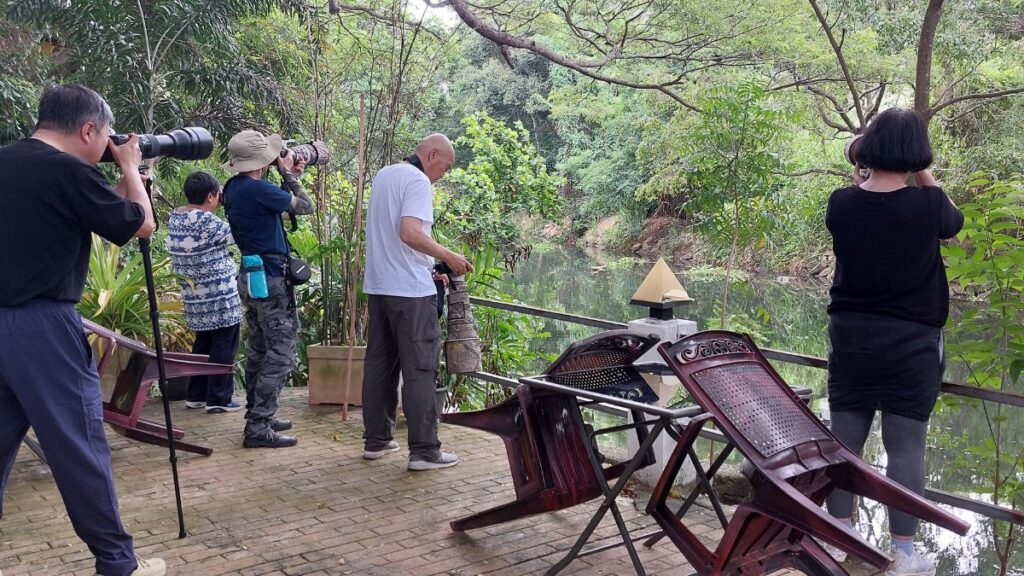
On the way we stopped at Seethawaka Botanic Garden because last day we missed the target endemic bird, the Sri Lanka Wood shrike, so Seethawaka Botanic Garden is a possible place to put a tick for the Wood shrike.
As we hoped we photographed the Sri Lanka WoodShrike with many more other birds, we were able to see the Sri Lanka Swallow and Sri Lanka Lesser flareback with an endemic bird list increased up to four within the first 48 hours. Among the other notable species were Chestnut-headed Bee-eater, Tickle’s Blue Flycatcher, Oriental White-eye, Orange Minivet, Bar-winged Flycatcher Shrike and Velvet-fronted Nuthatch.








Seethawaka Botanical Garden is a recently established botanic garden to resemble the low country wet zone landscape and it contributes to conservation of many plant species by propagating and maintaining nurseries to ensure the continued supply of saplings for restoration projects island wide.
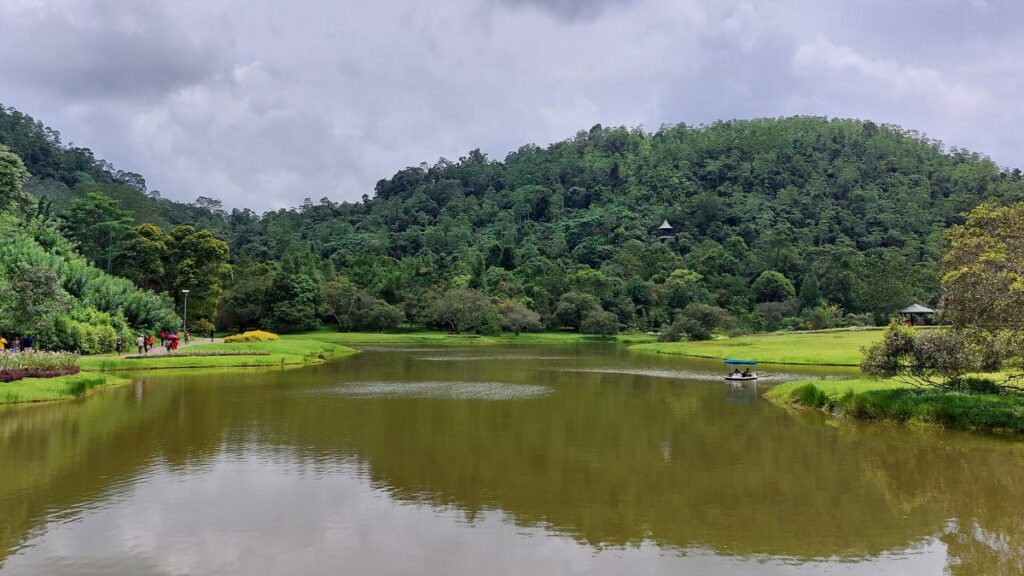
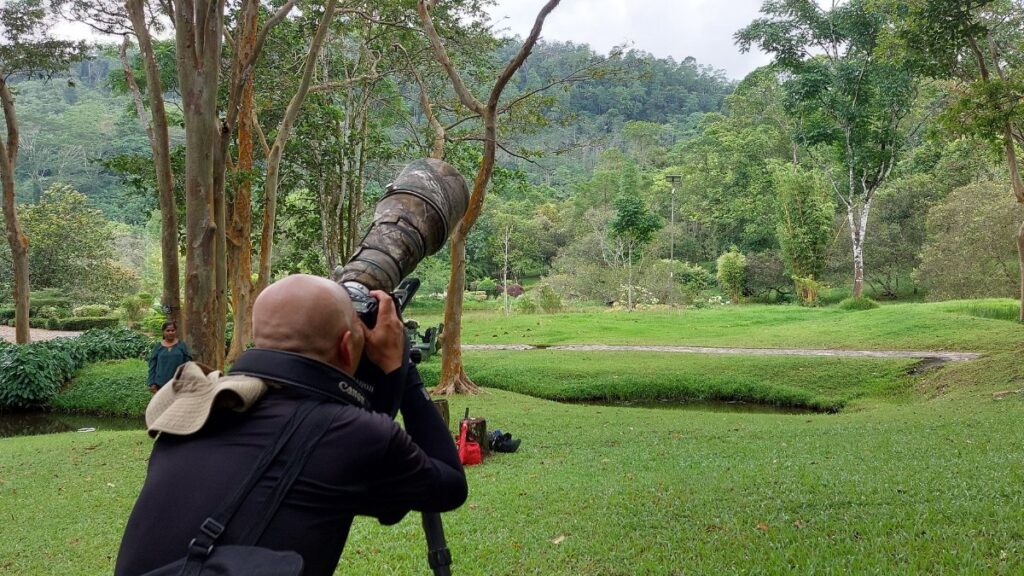
Once we are done with the birding in the first botanic garden in the itinerary, we directly go to Kithulagala rest house to get our lunch. It was a little bit late when we had our lunch as we had spent nearly 2 hours in the Seethawaka Botanic Garden.
Kitulgala area is very famous for two things (outside birding), one is for white water rafting and the other thing is it was the location which was selected to shoot a popular film in 1980 “The Bridge on the river Kwai”.
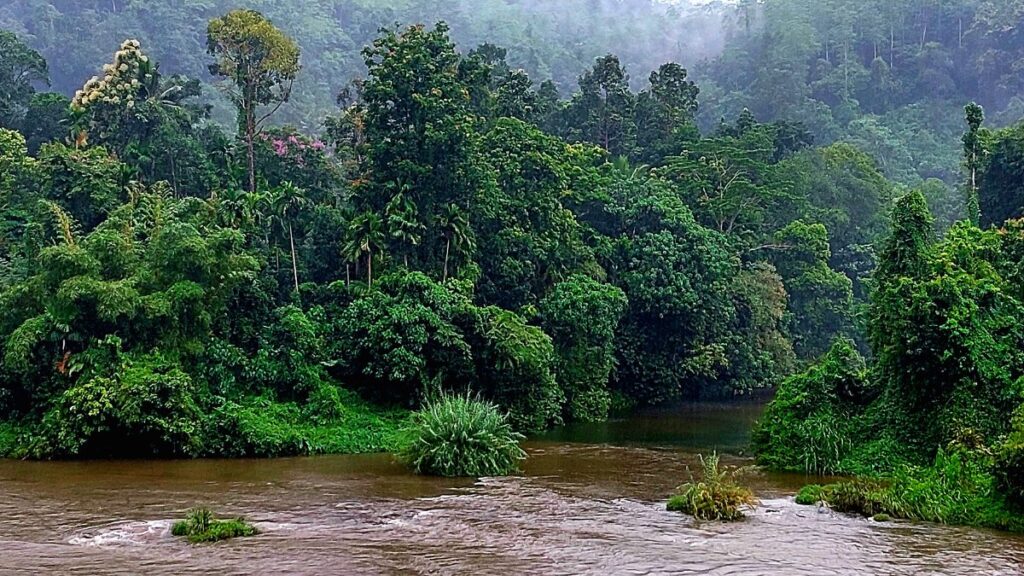
After lunch our birding team enjoyed the scenic beauty of the Kithulgala landscapes and some of them already started birding at the hotel premises.
Even at the hotel premises we were able to observe and photograph several endemic birds including Sri Lanka Emerald-collared Parakeet, Sri Lanka Green Pigeon, Sri Lanka Legg’s Flower Pecker/ White-throated Flowerpecker and Sri Lanka Hanging Parrot. Because there was an Oil Palm tree full of ripped fruits and most of the frugivorous birds gathered on the tree to feed on the fruits. Our team was lucky enough to see four endemic bird species in one spot.
Day 03: 19th of July
Early in the morning we observed two White-bellied Sea-Eagles roost on the Dipterocarp tree just next to the hotel and also the Common Kingfisher. After breakfast we crossed the Kelani River by boat and reached the other bank.
Because it rained last night the river flow was a bit fast. But it was quite an experience for the birding team, and they were amazed by the boatmen as he is well capable of riding it on the rapid flow.
As soon as we entered the village area there were plenty of different bird species common to wet zone landscapes. All of a sudden we encountered an average flock of Sri Lanka Orange-billed Babblers and I counted 14 individuals. We never expected to get Orange-billed Babbler this soon.
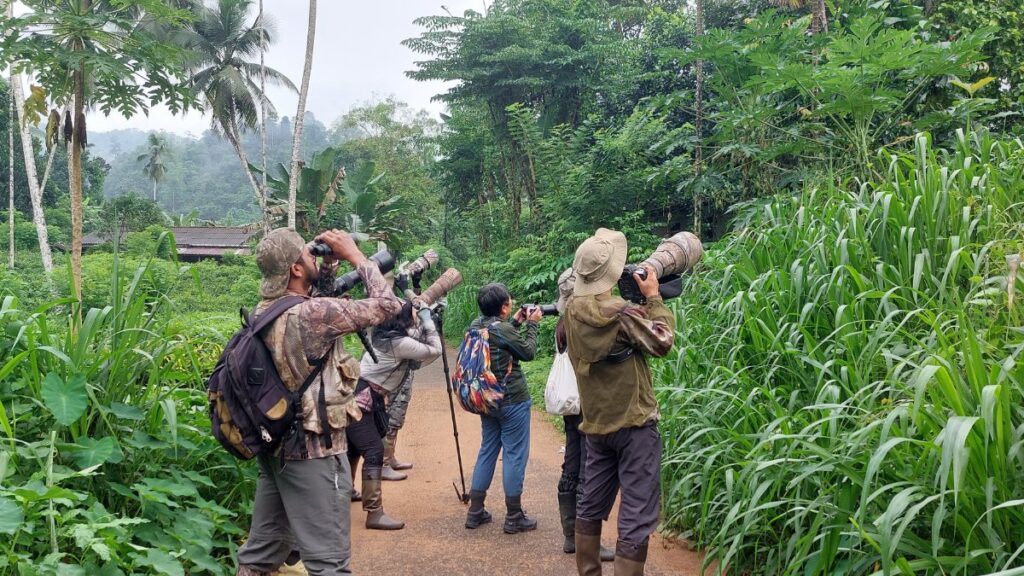
Then we walked along the road towards the entrance of Makandawa Forest Reserve, where Makandawa Forest Reserve and Parawalathanna village area are very famous among the birders as a perfect location for bird photography, because most of the forest bird species are easy to observe in the village setup compared to the forest inside.

Because in Sri Lanka most of the village areas have almost similar tree cover with tall trees (mostly filled with fruit species such as Durian, rambutan, mango etc.) where superficially looks like a forest. These types of well wooded home gardens are refugia for many forest species when they have to face habitat destruction done by people. And also, with many freshwater streams and a river are located in the Parawalathenna village area which gives a mixture of different microhabitats to cater many types of bird species.
When we entered into the forest we spotted an endemic Sri Lanka Spot winged Thrush just few meters away from the entrance point. It was gently hopping on the ground and searching for food. Then we saw one individual of Tickell’s Blue Flycatcher which was ringed by me during my PhD research. We walked 400 m into the inner areas of the rainforest along the nature trail and turned to a left-hand side trail to do the circular loop walk which will end up in the village thus we don’t have to return on the same trail. It was a bit challenging trail with moderate climb at the first half of the length.
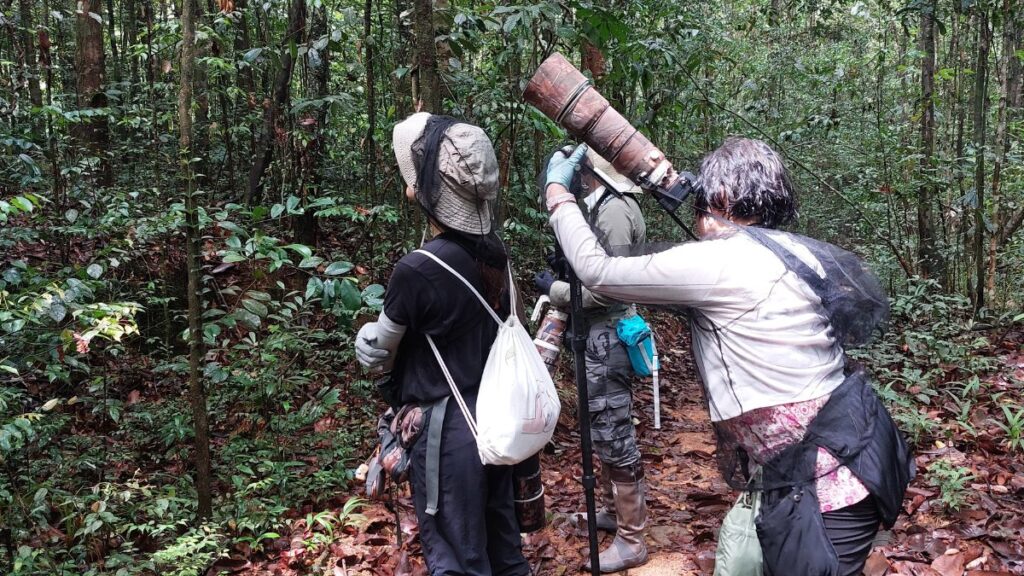
However, we were lucky to choose this path because we encountered a mixed species bird flock in the Makandawa rainforest which is not often seen by most of the bird watchers coming here. In that mixed species bird flock, we observed Black Bulbul, Sri Lanka Crested Drongo, Sri Lanka Scimitar Babbler, Sri Lanka Red-faced Malkoha, Malabar Trogon, Yellow-browed Bulbul, Sri Lanka Yellow-fronted Barbet, Black-napped Monarch, Common Iora, Leggs’s Flowerpecker, Sri Lanka Gray Hornbill, Sri Lanka Crimson-backed Flameback, Sri Lanka Red-backed Flameback, Orange Minivet, Bar-winged Flycatcher Shrike, Jerdon’s Leafbird, and we heard the call of White-faced Starling.
Once we came out from the rainforest, we got a small rain shower and went into a nearby temple to get some cover. We spent approximately 40 mins at the temple until the rain stopped and our team was busy with removing leeches on the leech socks.
After that we went to a nice village home to have a nice coffee. Mr. Ashoka was the homeowner who is a keen bird watcher at the village and he told us that there was an active nest of Oriental Dwarf Kingfisher/ The black-backed Kingfisher, one of the most beautiful kingfishers in Sri Lanka. So, we kept our safe distance from the nest because Mr. Ashoka had already provided a perfect hideout to photograph the kingfisher without disturbing its natural behaviors. Unfortunately, only one member of our team got a chance to photograph a male kingfisher with a skink on its beak.
Among the bird species we observed in the village setup Sri Lanka Hanging Parrot, nesting pair of Hill Mynas, Red-vented Bulbul, Indian White-eye, Greater Coucal, Crested Treeswifts, Spotted dove, Green Imperial Pigeon, Emerald Dove, Yellow-billed Babbler, Indian Swiftlet, and Pale-billed Flower Pecker were common. We observed one Shikra, and a pair of Velvet-fronted Nuthatch as well.
Mr. Ashoka requested us to stay until night falls because he wants to try for nocturnal birding to spot some owl species. Enthought we were a bit tired, our team decided to give it a try. So, we spent one and half hours in a densely vegetated area where Mr. Ashoka has seen endemic Chestnut-backed Owlet and Ceylon Frogmouth several times. But we were unable to see any of the nocturnal birds during that short time and our team requested that I go back to the hotel for rest.
So, we cross the Kelani River in the night on the boat to reach the other bank of the river and after a nice and delicious dinner with authentic Sri Lankan desert (Curd and Kithul treacle). We all went to get a nice rest and sleep.
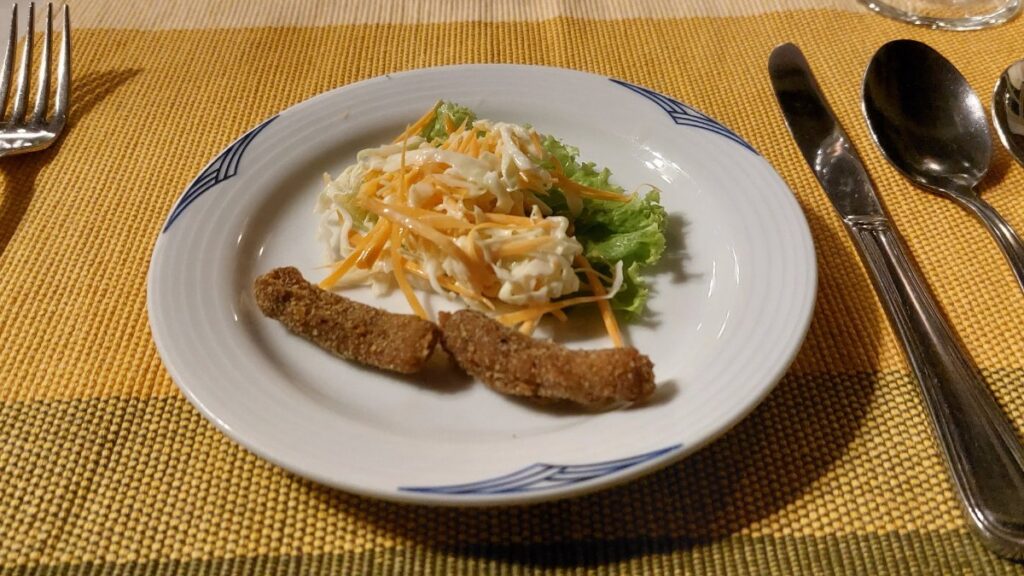
Day 04: 20th of July
We woke up around 6 AM and went birding around the hotel premises until our breakfast was ready. Once we finished our breakfast, we checked out and headed towards Nuwara Eliya. On the way we stopped at St. Clair’s Falls; one of the widest waterfalls in Sri Lanka and is commonly known as the “Little Niagara of Sri Lanka”.
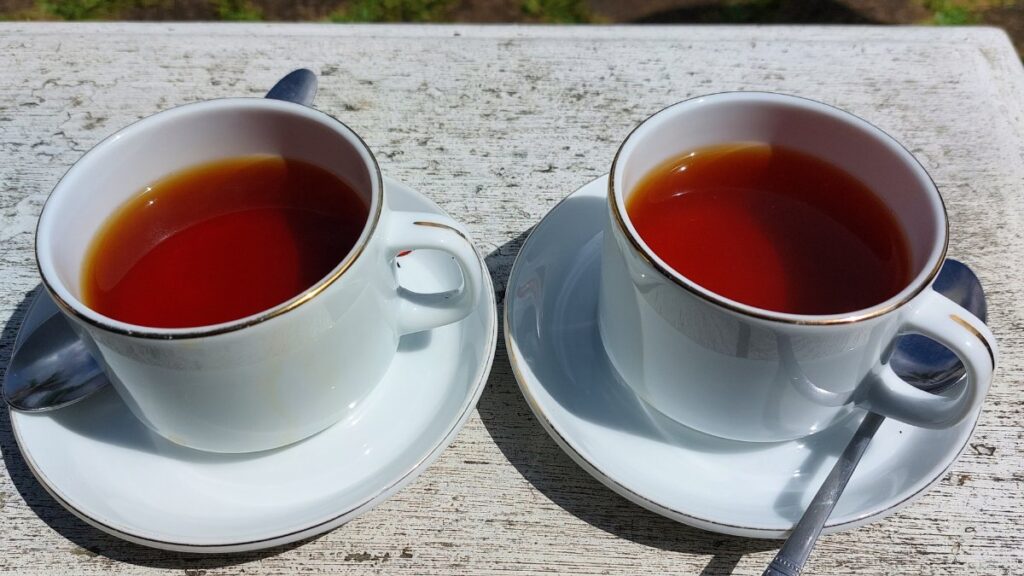
We had a nice Ceylon Tea and cool refreshment break while enjoying the scenic beauty of the surrounding. Since we arrived a bit early to Nuwara Eliya we decided to explore Galway’s National Park which is one of the small national parks in Sri Lanka.
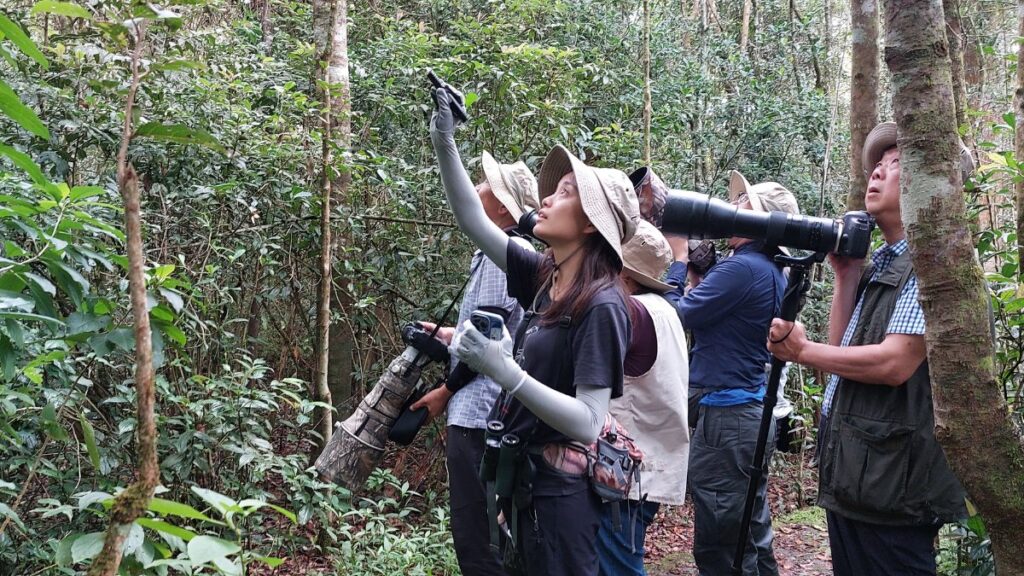
Here our team got to experience the highland rainforest habitat. It holds a unique set of birds which can be only found in the highland of Sri Lanka. Few of those bird species we observed in this park were Gray-headed Canary Flycatcher and Sri Lanka White-eye. Further we were lucky enough to photograph the endemic Sri Lanka Scimitar Babbler at close proximity.
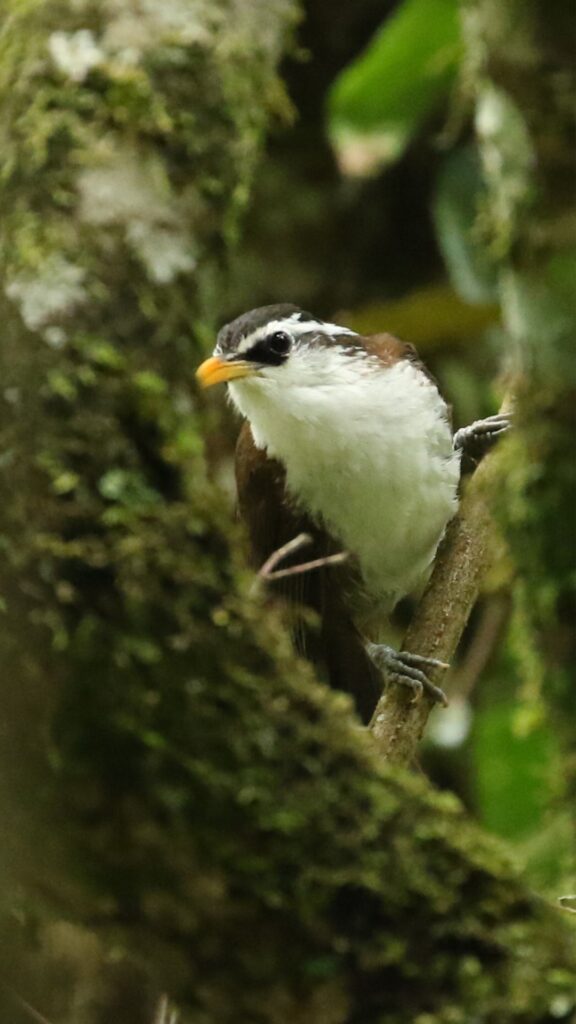

Among the other birds we saw in this National Park were Jungle Crow, Bar-winged Flycatcher Shrike, Velvet-fronted Nuthatch, Sri Lanka Yellow-eared Bulbul, Sri Lanka Dull-blue Flycatcher, Sri Lanka Crimson backed Flameback, and Greater Coucal.
After birding in Galway’s National Park, we headed to Heaven Seven Hotel for lunch and rest until the evening birding session. Even during the lunch time our team was able to see House Sparrow, Hill Swallow, Rock Pigeon, and Oriental Magpie Robin. At around 3.30 PM we went to Hakgala Botanic Garden.
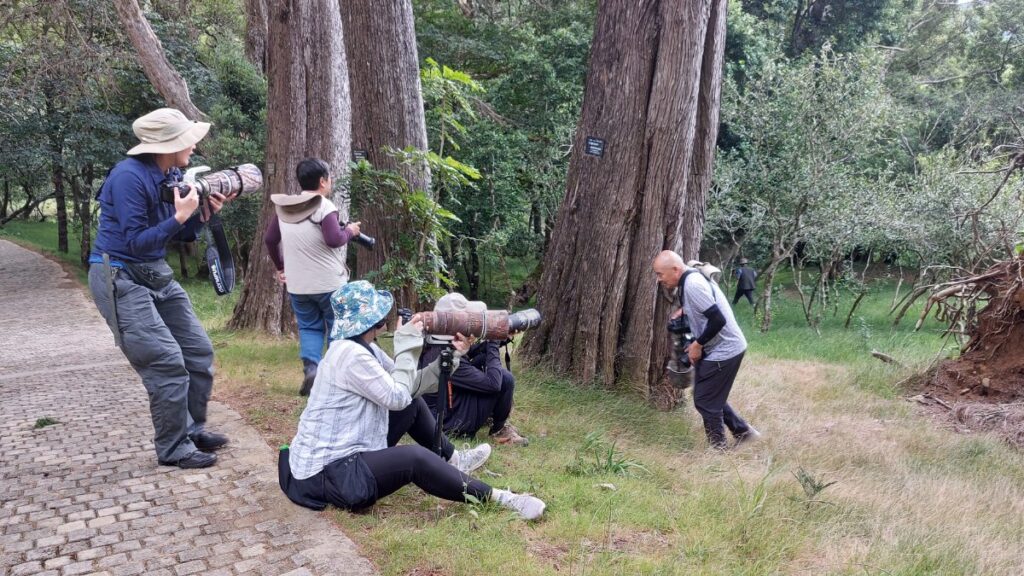
At the Hakgala Botanic Garden the main target was the endemic Sri Lanka Wood Pigeon. We were super lucky to observe a pair of Wood Pigeons resting on a branch and it was located at the edge trail closer to the Hakgala SNR border. Since the pair were resting all the members of our birding team were able to see the elusive endemic bird and photograph it. Besides the Wood Pigeon we were able to observe Great Tit, Spotted Dove, Sri Lanka White-eye, Sri Lanka Yellow-eared Bulbul, and Sri Lanka Dull-blue Flycatcher.
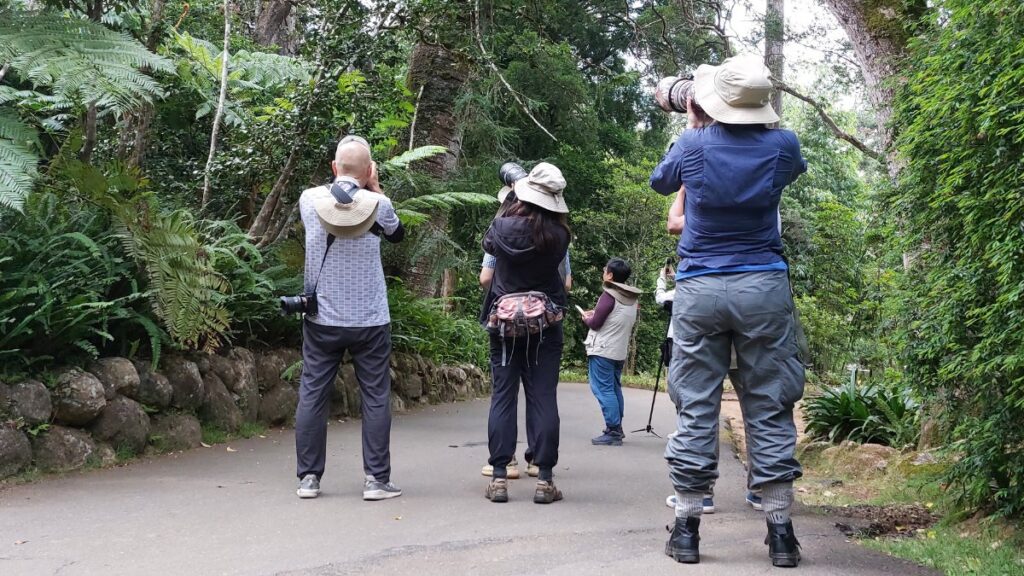
Furthermore, our team got a super cool experience where they saw the endemic primate, the Sri Lanka Purple-faced Leaf Monkey’s subspecies confined to the mountain zone, the Bear Monkey. There were about six individuals in that troop we observed and they found to be quite used to humans as they are not afraid of us. At about 5.30 PM we left the botanic garden and reached Nuwara Eliya town. Few of our team members enjoyed the town and some of them did some shopping as well. After that we went back to the hotel and rested.
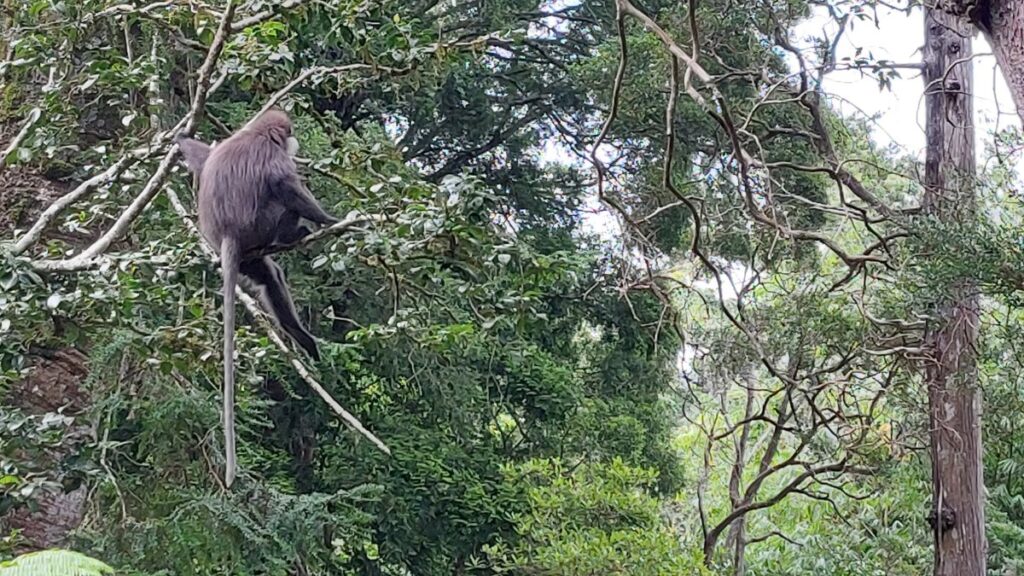
Day 05: 21st of July
Early in the morning we checked out from the hotel because today we have to go to Sinharaja. Because of that and there is another challenging endemic target bird to see in the Horton Plains National Park, we had to reach the Horton Plains National Park as early as possible in the morning.
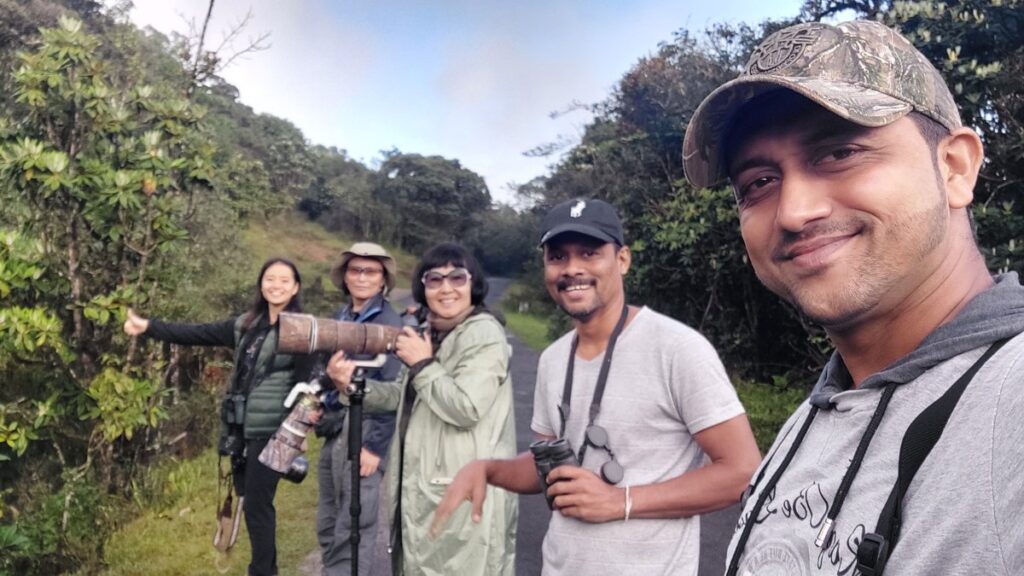
So, we left the hotel at 5.30 AM and reached Horton Plain at 6 AM. As we hoped, I heard the faint whistle type call several times when we stopped at the Aranga pool area. And suddenly a well grown male bird appeared from the forest and parched on a branch and started singing.
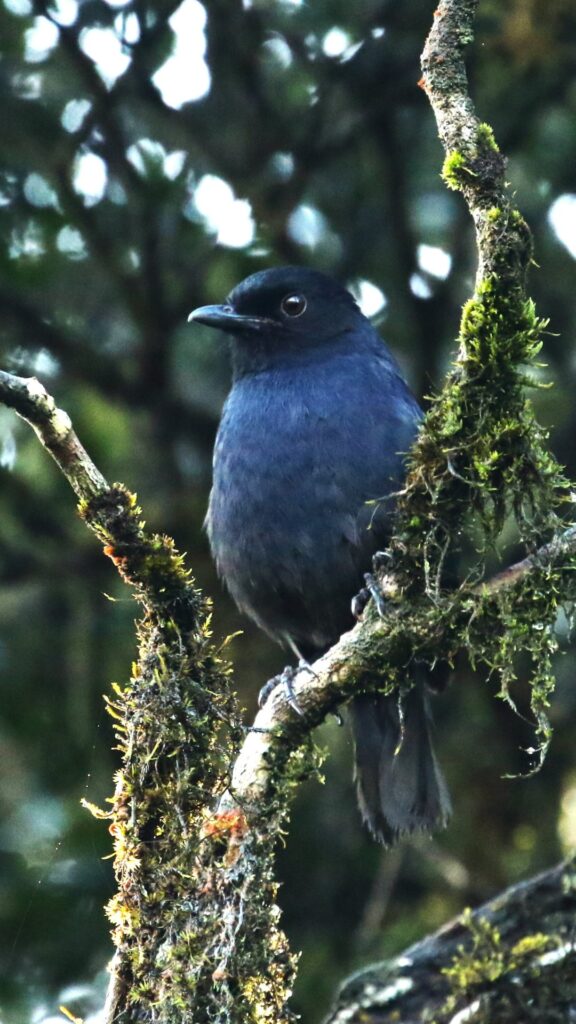
We were so amazed as we never expected this much easiness of spotting one of the rarest endemic birds in Sri Lanka, the Sri Lanka Whistling Thrush. It remained there for about 40 mins giving us the maximum opportunity to photograph even though there was a bit of misty condition.
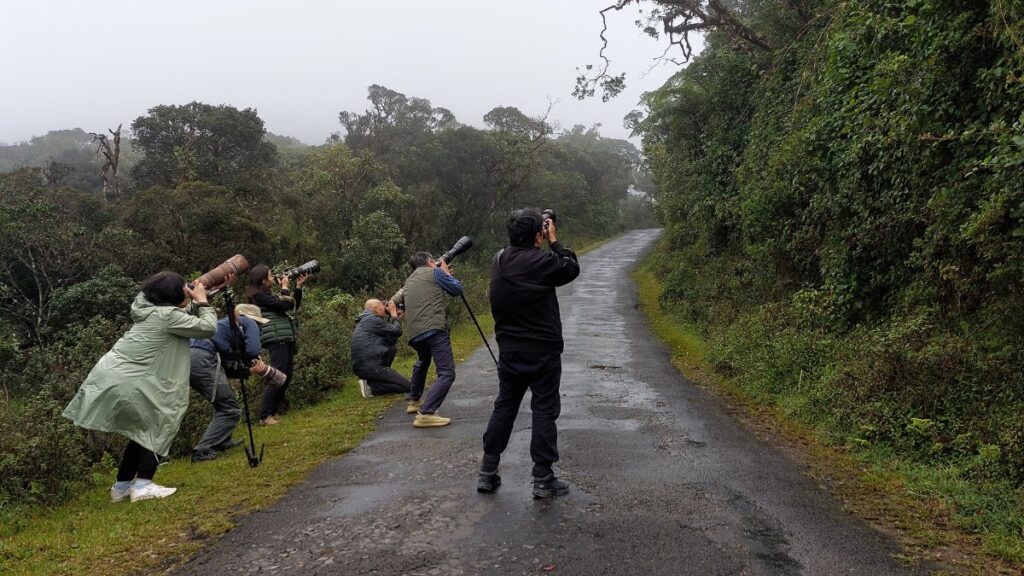
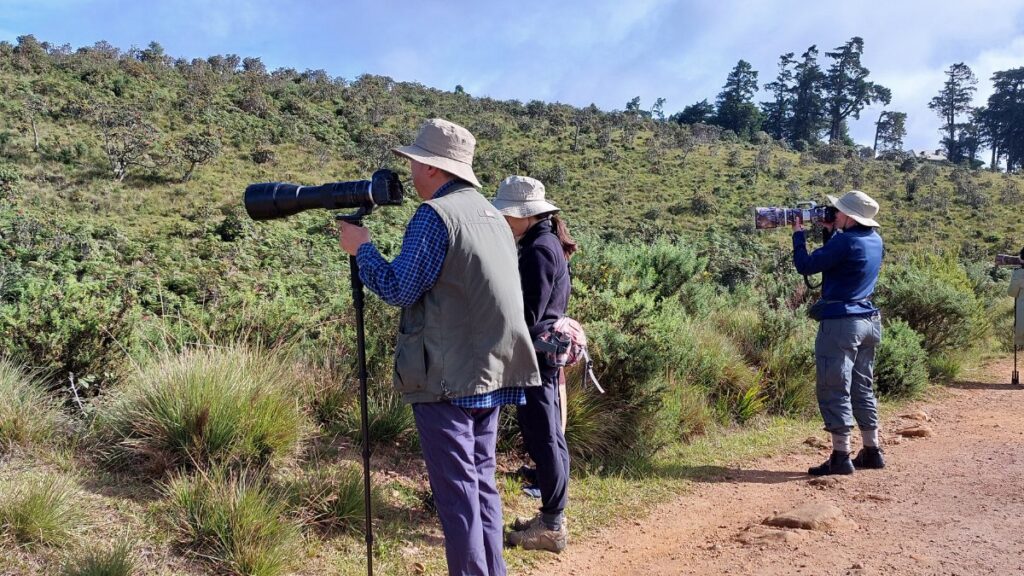
Then we started to walk on the loop trail of the Horton Plains which runs through Backers falls and Worlds End. Our team witnessed the breathtaking landscape of Horton Plains with a chilling breeze. We spotted an endemic, rare, and well-known lizard residing in Horton Plains, the Rhino-horned Lizard at the area near to Backer’s waterfall. On the plain’s areas with waste grasslands, we observed Pied Bush chat, Zitting Cisticola, Tricolor Munia, Paddy-field Pipit, Ashy Prinia, Hill Swallow, common Tailorbird, and Brahminy Kite.
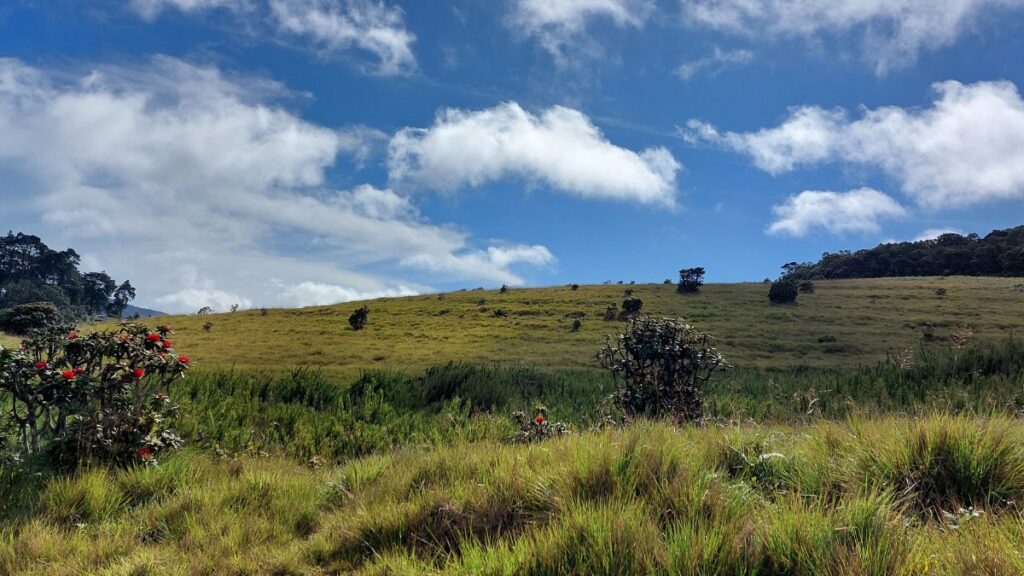
Around 11 AM we left Horton Plains National Park and started moving towards Ella. We stopped at Ella for our lunch and had it with a magnificent view of Ella mountains and widespread valley areas.
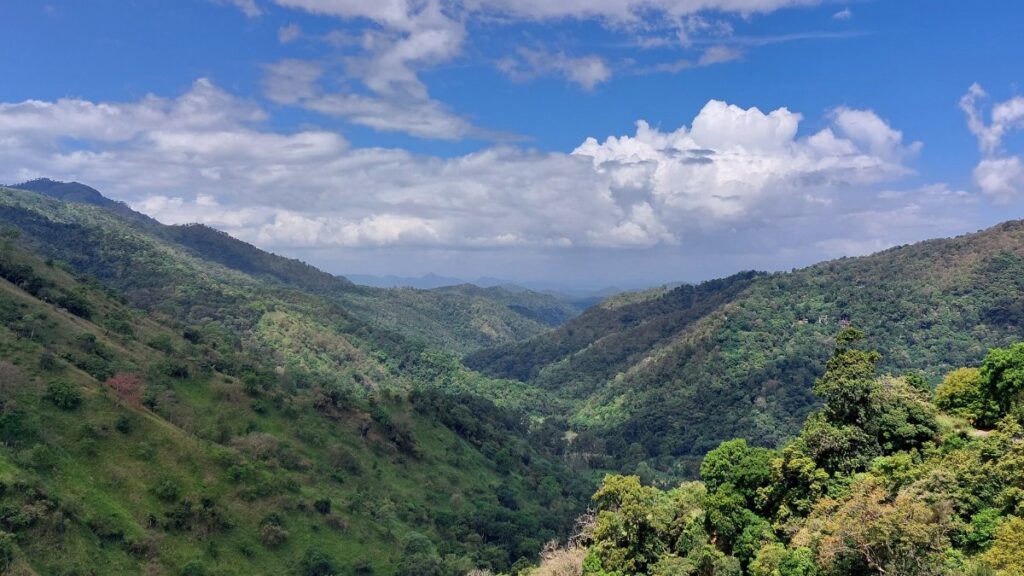
Then there was a request to see an Asian Elephant from one of our clients. Thus, we have decided to do a short visit to Udawalawe National Park, because it is located on the road, we go to Sinharaja Rainforest.
We reached the Udawalawe at 2.30 PM and did a two-hour safari jeep drive in the Udawalawe National Park. Along with the several elephant herds we were able to add Indian peafowl, Common Hoopoe, Rufous winged Bushlark, Blue-faced Malkoha, Sri Lanka Green Pigeon, Orange-breasted Green Pigeon, Plum-headed Parakeet, Yellow-eyed Babbler, Tawny-bellied Babbler, Gray-breasted Prinia, Jungle Prinia, Indian Roller, Changeable Hawk Eagle, Crested Serpent Eagle, Malabar Pied Hornbill and Pied Cuckoo.
Since this was a fruitful attempt to see elephants plus adding many more birds into our total list, our Chinese tour leader Si Qi decided to add this Udawalawe National Park as a destination to must visit. Because in the original tour plan, we did not consider the Udawalawe National Park as a location for our trip as we highly dedicated the plan to see all the endemic birds.
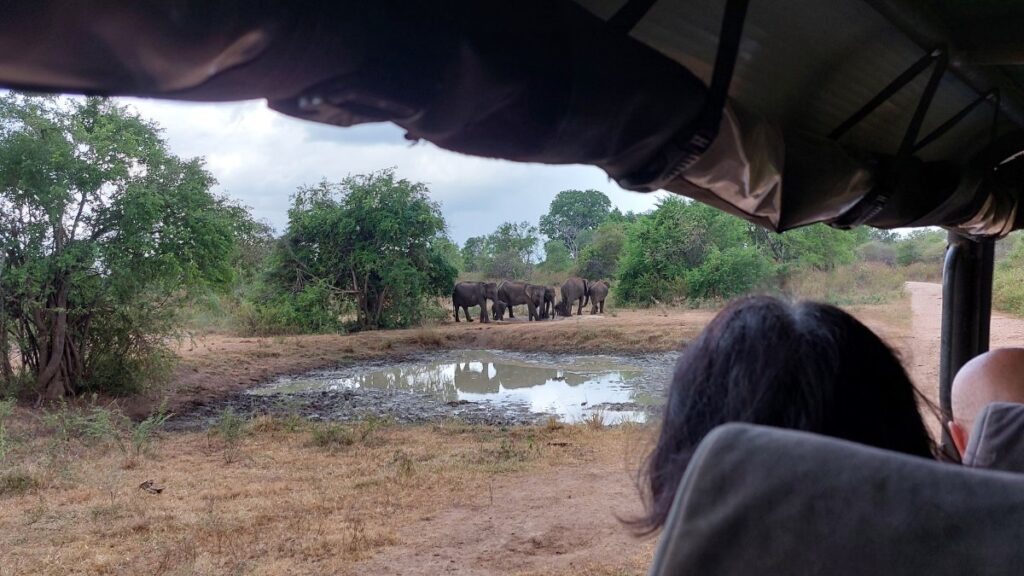
As we did our boarding till 5.30 PM, we had to accept the changes in the arrival time to the hotel at Kudawa, Sinharaja area, because it was nearly 9 PM when we reached the Blue Magpie Hotel in Kudawa village. Once our team finished the very late dinner everybody went to sleep because we needed to do early birding in the village next to a great rain forest.
Day 06: 22nd of July
Early in the morning around 6 am we did a short walk along the village road to see the birds. It was fruitful because we covered several endemic birds and got an opportunity to observe four individuals of Ruddy Mongoose which were crossing the road.
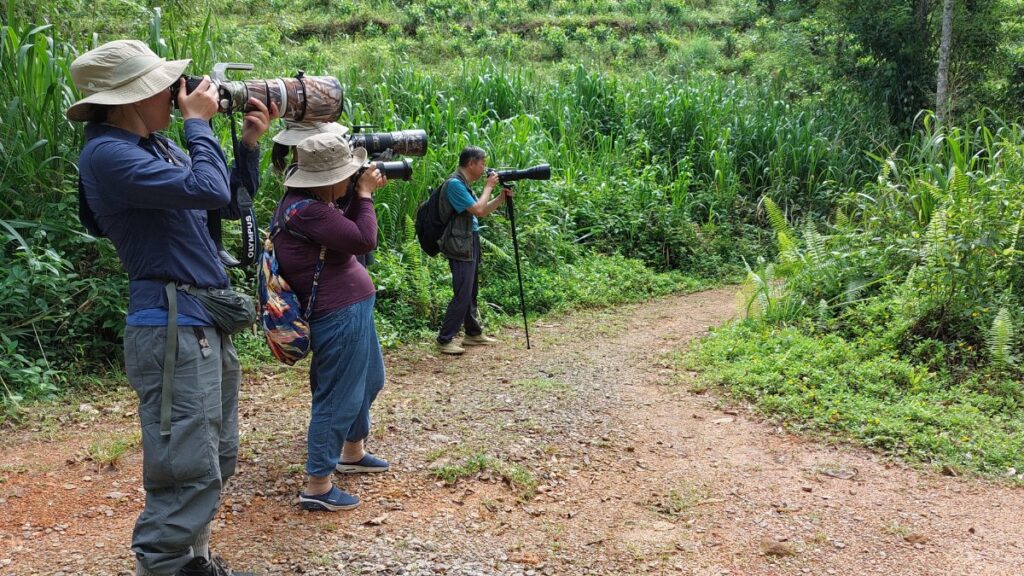
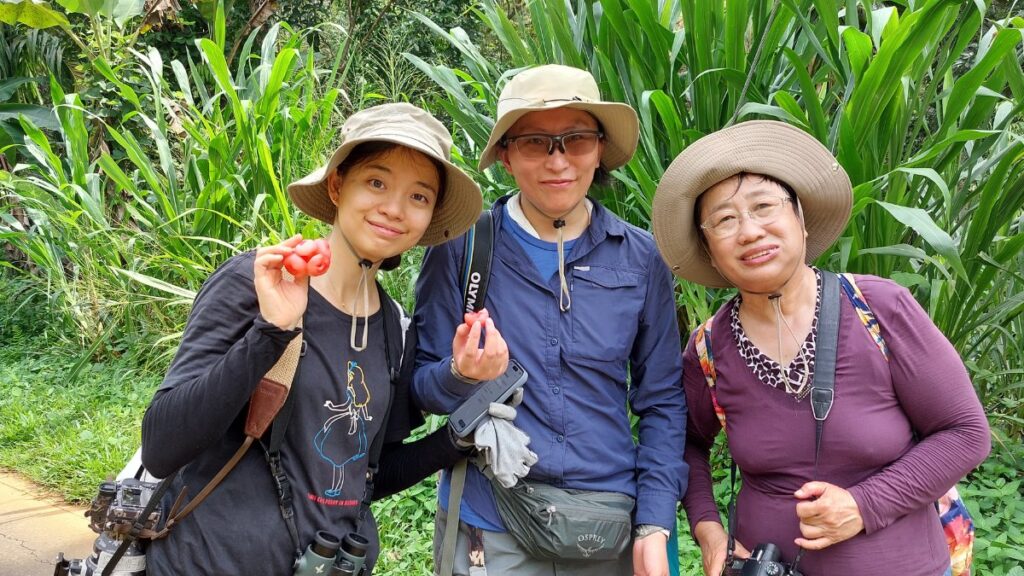
Among the bird species we spotted Sri Lanka Myna, Sri Lanka Hanging Parrot, Sri Lanka Green Pigeon, Sri Lanka Yellow-fronted Barbet, Sri Lanka White throated Flowerpecker/ Legg’s Flower Pecker and Sri Lanka Crested Drongo ticked as endemics. Then we got majestic Rufous bellied Hawk Eagle rooting on a tree just warming up the body with morning sunshine.
Then we came back to the hotel to have our breakfast then went to Ketalapththala trail with off-road Jeeps hosted by Waruna. The main target was to spot the rare and elusive Serendib Scops Owl. We were guided by Mr. Waruna toa day roosting site of Serendib Scops Owl. We were asked to keep calm and observe the owl at safe distance as this species is a globally threatened species, if the roosting site disturbed it will decently affect the survival of this sensitive owl species.
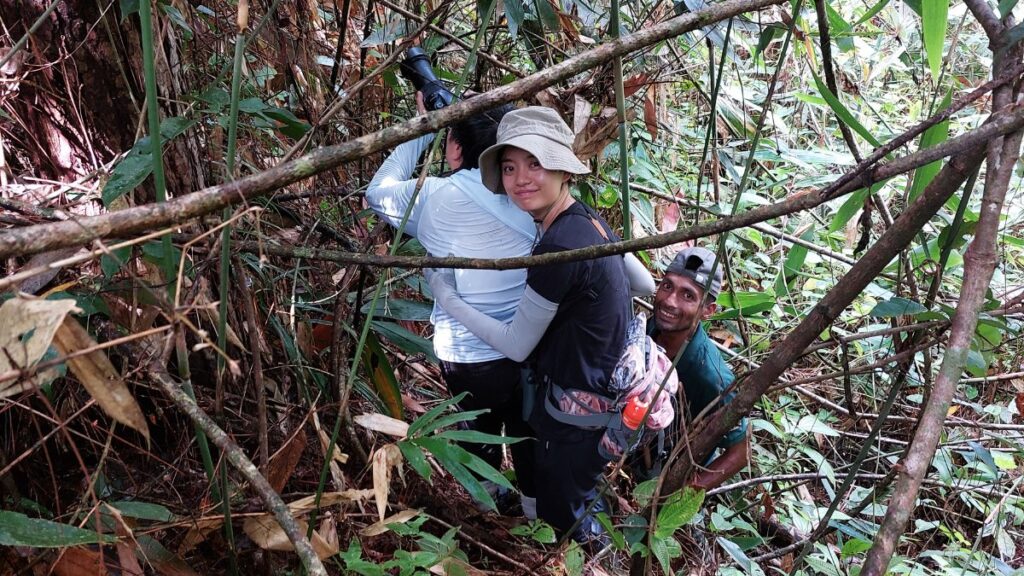

So, we ask all the bird watchers to behave responsibility and follow ethical bird watching as much as possible for the betterment of the ecology and conservation of these birds. It was very difficult climb to reached the roosting spot but all the team members got chance to observe and photograph the Serendib Scops Owl, a big thank must goes to Mr. Waruna who was the finder and assisted us to reach the spot through difficult terrain. On the way back we spotted a nest of Black-napped Monarch.
After lunch we went to the entrance point of Sinharaja Rain Forest to explore the birds and other wildlife within the protected area. We need to buy tickets and get an official local guide to go inside the rainforest. It was around 3 pm when we reached the entrance point and did some birding there, because the surrounding area is already a rainforest and easy to observe many forest bird and butterfly species either side of the road.
We saw Dendrolaphis bifinalis an arboreal snake and Sri Lanka Kangaroo Lizard. Further an entire troop of endemic Sri Lanka Purple-faced Leaf Monkey was observed. Our local guide showed us a roosting pair of Ceylon Frogmouth in the Sinharaja rainforest which is very famous roosting spot.

Then we decided to turn back and come to the hotel as the light condition in the rain forest is not good for the photography as it close to nightfall.
Sharp at 4.55pm we spotted a pair of Sri Lanka Chestnut-backed owlets just 100 m away from the main ticketing point towards the village. Actually, one individual was carrying a praying mantis on its beak, suggesting to us that there is an active nest in a nearby area. But the both pairs flew deep into the forest where we cannot observe. However, few of our team members were able to take nice photographs of that pair. All the team were returned to the hotel with an unforgettable experience on tropical birding in a lush rainforest.
Once we went back to the hotel after a few hours of rest, we had our dinner and I did a powerpoint presentation to the entire team on Biodiversity of Sri Lanka. I educated them about the importance of biodiversity and the value of biodiversity conservation and the current condition of biodiversity conservation of Sri Lanka.
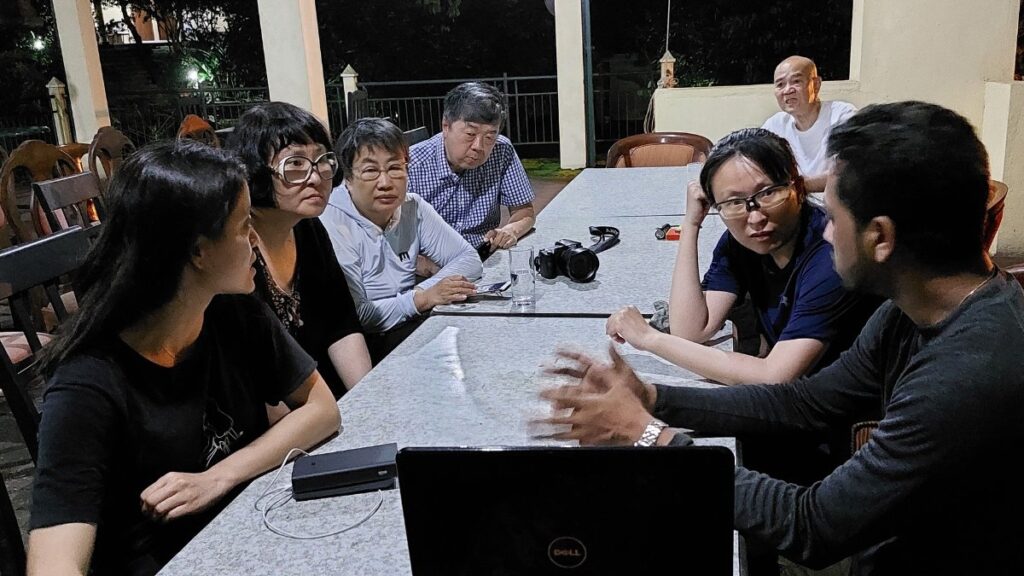
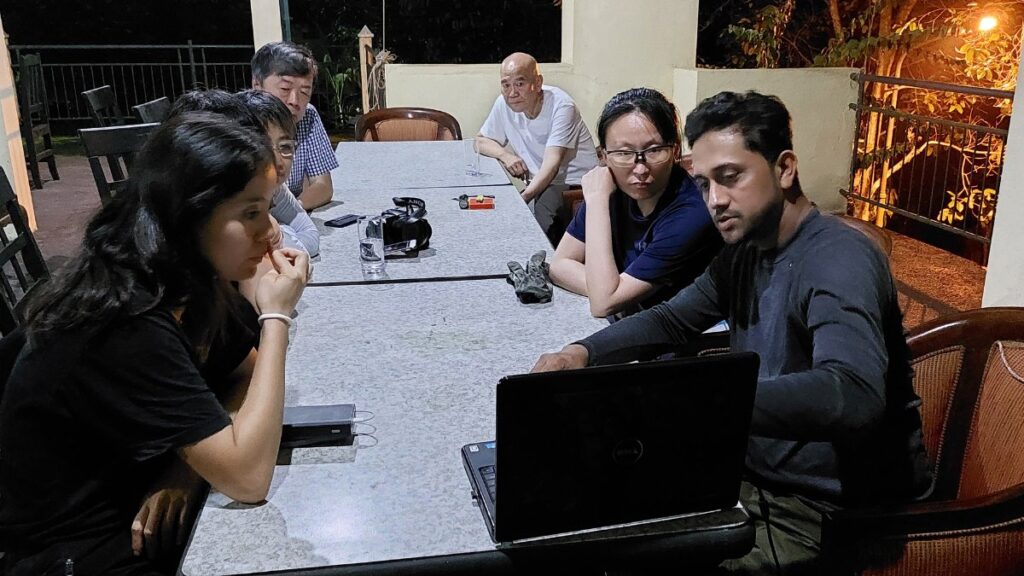
All the members were so happy to listen to it as they never expect to get such educational activity within this birding trip and we never noticed about this on the tour itinerary as well. This is one of the specialties in our team Zigma Tours where we always educate our clients with the most updated scientific facts, where no other tour company still does, to the best of our knowledge.
Therefore, the other tour companies and agents will do this in future and it will be important to spread the knowledge on biodiversity conservation. After my presentation we had a short discussion about Sri Lankan conservation projects and then we concluded the day’s work and went to sleep.
Day 07: 23rd of July
We woke up at 6.00am and went to Sinharaja Rain Forest from a different road which runs through the village. We went to see the Research and Environmental Education Center (REEC) operated by the Sinharaja Forest Department and educated the team about the Sinharaja World Heritage Site. Our team observed the Sri Lanka Jungle Fowl here. To be honest I was a bit upset that we did not see the Sri Lanka Jungle Fowl before as it is not that difficult to see. But in the REEC we were able to put a tick on that endemic bird as well.

We went inside the forest with our packed breakfast because we don’t want early morning hours which is brilliant for bird watching. We observed Emerald Dove, Square-tailed Black Bulbul, Common Iora, Legg’s Hawk Eagle, Dark-fronted Babbler, Yellow-browed Bulbul, Orange Minivet, Sri Lanka White-faced Starling, Sri Lanka Myna, Black-napped Monarch, Crested Goshawk, and Sri Lanka Blue Magpie. We walked to the research station which is located 4 km inside the rainforest and had our packed lunch. Here we tried our best to find the Sri Lanka Scaly Thrush but we failed to find it.
Around 1.30 pm we decided to go back and we reached the famous Martin’s Lodge to have a Tea and Coffee there. It was such a nice place to observe the birds while having a coffee as they provide bird feeders. So our team members were able to photograph Sri Lanka White-faced Starling, Emerald Dove, Sri Lanka Blue Magpie, Sri Lanka Gray Hornbill, Sri Lanka Junglefowl, Pale-billed Flowerpecker, and Yellow-browed Bulbul.
Further two Sri Lanka Purple-faced Leaf Monkeys and Flame-striped Squirrel were observed there. We spent almost two hours at Martin’s Lodge and left there around 4.30 pm. On the way back we were lucky enough to observe a mixed species feeding flock which comprised seven bird species. There were five Sri Lanka Crested Drongo, 12 Sri Lanka Orange-billed Babblers, two Red-faced Malkohas, one Crimson Backed Flameback, four Yellow-browed Bulbuls, one Yellow-fronted Barbet, and one Lesser Yellow-naped Woodpecker. But I’m sure that we might have missed a few species as when we spotted the flock, we assumed it was half of the flock.
We went back to the hotel around 6.30 pm.
Day 08: 24th of July (Departure Day)
Today we again went to Ketalapaththala nature trail to see more birds. Since we needed to check out from the hotel today and leave for Colombo, we did not have much time to spend at the Ketalapaththala area. So, we stayed there from 6.30 am to 9.30 am and went back to the hotel for breakfast. As we did not see the Sri Lanka Green-billed Coucal I asked Mr. Waruna to keep an eye on it because there were pairs in the village area which we can easily see during morning half.


As I thought, Mr. Waruna was able to spot them and notify us so we rushed to the place. Actually, we were very lucky to see the pair of Sri Lanka Green-billed Coucal on a branch near the bank of the freshwater stream. The pair was sun bathing and preening and conditioning the wings thus spent on the branch for more than 30 minutes. I’m so happy as I assisted this team to see 33 endemic bird species within this trip, where only one species we missed was Sri Lanka Scaly Thrush.
After observing the Green-billed Coucal out team went back to the hotel and I asked them to pack all the stuff and checkout. Around 11 am we left the Kudawa and had our lunch at Mathugama. On the way we stopped to see the Asian Open bill as requested by one client.
We reached the Colombo around 2.30 pm and the departure time at the airport was 8.30 pm for the clients. So, we decided to go back to the Colombo Diyasaru Wetland Park just to see some birds and photograph as it is a fascinating birding location for bird photographers. We did birding and bird photography there until 3.45 pm and left for Bandaranaike International Airport. We reached Negombo at 6.30 pm and we dropped the birding team at the airport around 6.45 pm because we need to be at the airport at least 2 hours before the departure time.
This was the end of a wonderful birding trip which covered 143 bird species including 33 endemics.
So, we warmly welcome you all to experience an unforgettable birding and wildlife tour with Zigma Tours which is guided by professionals in the field of Ornithology.

By Dr. Salindra K. Dayananda (Director Operation)
Bird Checklist of the Tour
| SCIENTIFIC NAME | COMMON ENGLISH NAME |
| Prinia socialis Sykes, 1832 | Ashy Prinia |
| Artamus fuscus Vieillot, 1817 | Ashy Woodswallow |
| Hypsipetes ganeesa Sykes, 1832 | Square-tailed Bulbul |
| Eudynamys scolopaceus (Linnaeus, 1758) | Asian Koel/ Western Koel |
| Anastomus oscitans (Boddaert, 1783) | Asian Openbill |
| Cypsiurus balasiensis (Gray, 1829) | Asian Palm-swift |
| Terpsiphone paradisi (Linnaeus, 1758) | Asian Paradise-flycatcher |
| Hemipus picatus (Sykes, 1832) | Bar-winged Flycatcher-shrike |
| Ictinaetus malayensis (Temminck, 1822) | Black Eagle |
| Nycticorax nycticorax (Linnaeus, 1758) | Black-crowned Night-heron |
| Coracina melanoptera (Rüppell, 1839) | Black-headed Cuckooshrike |
| Threskiornis melanocephalus (Latham, 1790) | Black-headed Ibis |
| Oriolus xanthornus (Linnaeus, 1758) | Black-hooded Oriole |
| Hypothymis azurea (Boddaert, 1783) | Black-naped Monarch |
| Himantopus himantopus (Linnaeus, 1758) | Black-winged Stilt |
| Phaenicophaeus viridirostris (Jerdon, 1840) | Blue-faced Malkoha |
| Haliastur indus (Boddaert, 1783) | Brahminy Kite |
| Psilopogon zeylanicus (Gmelin, 1788) | Brown-headed Barbet |
| Bubulcus ibis (Linnaeus, 1758) | Cattle Egret |
| Nisaetus cirrhatus (Gmelin, 1788) | Changeable Hawk-eagle |
| Merops leschenaulti Vieillot, 1817 | Chestnut-headed Bee-eater |
| Fulica atra Linnaeus, 1758 | Common Coot |
| Aegithina tiphia (Linnaeus, 1758) | Common Iora |
| Alcedo atthis (Linnaeus, 1758) | Common Kingfisher |
| Gallinula chloropus (Linnaeus, 1758) | Common Moorhen |
| Acridotheres tristis (Linnaeus, 1766) | Common Myna |
| Orthotomus sutorius (Pennant, 1769) | Common Tailorbird |
| Psilopogon haemacephalus (Müller, 1776) | Coppersmith Barbet |
| Accipiter trivirgatus (Temminck, 1824) | Crested Goshawk |
| Spilornis cheela (Latham, 1790) | Crested Serpent-eagle |
| Hemiprocne coronata (Tickell, 1833) | Crested Treeswift |
| Rhopocichla atriceps (Jerdon, 1839) | Dark-fronted Babbler |
| Chalcophaps indica (Linnaeus, 1758) | Emerald Dove/ Grey-capped Emerald Dove |
| Upupa epops Linnaeus, 1758 | Eurasian Hoopoe/ Common Hoopoe |
| Batrachostomus moniliger Blyth, 1846 | Frogmouth/ Ceylon Frogmouth |
| Phalacrocorax carbo (Linnaeus, 1758) | Great Cormorant |
| Ardea alba (Linnaeus, 1758) | Great Egret/ Great White Egret |
| Parus major Linnaeus, 1758 | Great Tit |
| Centropus sinensis (Stephens, 1815) | Greater Coucal |
| Ducula aenea (Linnaeus, 1766) | Green Imperial-pigeon |
| Ardea cinerea Linnaeus, 1758 | Grey Heron |
| Prinia hodgsonii Blyth, 1844 | Grey-breasted Prinia |
| Culicicapa ceylonensis (Swainson, 1820) | Grey-headed Canary-flycatcher |
| Gracula religiosa Linnaeus, 1758 | Hill Myna |
| Hirundo domicola Jerdon, 1844 | Hill Swallow |
| Corvus splendens Vieillot, 1817 | House Crow |
| Passer domesticus (Linnaeus, 1758) | House Sparrow |
| Turdus simillimus Jerdon, 1839 | Indian Blackbird |
| Phalacrocorax fuscicollis Stephens, 1826 | Indian Cormorant |
| Pavo cristatus Linnaeus, 1758 | Indian Peafowl |
| Ardeola grayii (Sykes, 1832) | Indian Pond-heron |
| Saxicoloides fulicatus (Linnaeus, 1766) | Indian Robin |
| Coracias benghalensis (Linnaeus, 1758) | Indian Roller |
| Aerodramus unicolor (Jerdon, 1840) | Indian Swiftlet |
| Ardea intermedia Wagler, 1829 | Intermediate Egret |
| Chloropsis jerdoni (Blyth, 1844) | Jerdon’s Leafbird/ Blue-winged Leafbird |
| Corvus levaillantii Lesson, 1831 | Jungle Crow |
| Prinia sylvatica Jerdon, 1840 | Jungle Prinia |
| Dendrocygna javanica (Horsfield, 1821) | Lesser Whistling-duck |
| Microcarbo niger (Vieillot, 1817) | Little Cormorant |
| Egretta garzetta (Linnaeus, 1766) | Little Egret |
| Tachybaptus ruficollis (Pallas, 1764) | Little Grebe |
| Apus affinis (Gray, 1830) | Little Swift/ House Swift |
| Nectarinia lotenia (Linnaeus, 1766) | Long-billed Sunbird |
| Anthracoceros coronatus (Boddaert, 1783) | Malabar Pied Hornbill |
| Harpactes fasciatus (Pennant, 1769) | Malabar Trogon |
| Nisaetus nipalensis Hodgson, 1836 | Mountain Hawk-eagle |
| Treron bicinctus (Jerdon, 1840) | Orange-breasted Green-pigeon |
| Anhinga melanogaster Pennant, 1769 | Oriental Darter |
| Ceyx erithaca (Linnaeus, 1758) | Oriental Dwarf-kingfisher/ Black-backed Kingfisher |
| Pernis ptilorhyncus (Temminck, 1821) | Oriental Honey-buzzard |
| Copsychus saularis (Linnaeus, 1758) | Oriental Magpie-robin |
| Zosterops palpebrosus (Temminck, 1824) | Oriental White-eye |
| Anthus rufulus Vieillot, 1818 | Paddyfield Pipit |
| Mycteria leucocephala (Pennant, 1769) | Painted Stork |
| Dicaeum erythrorhynchos (Latham, 1790) | Pale-billed Flowerpecker |
| Hydrophasianus chirurgus (Scopoli, 1786) | Pheasant-tailed Jacana |
| Clamator jacobinus (Boddaert, 1783) | Pied Cuckoo/ Jacobin Cuckoo |
| Prinia inornata Sykes, 1832 | Plain Prinia |
| Psittacula cyanocephala (Linnaeus, 1766) | Plum-headed Parakeet |
| Ardea purpurea Linnaeus, 1766 | Purple Heron |
| Nectarinia asiatica (Latham, 1790) | Purple Sunbird |
| Nectarinia zeylonica (Linnaeus, 1766) | Purple-rumped Sunbird |
| Pycnonotus cafer (Linnaeus, 1766) | Red-vented Bulbul |
| Vanellus indicus Boddaert, 1783 | Red-wattled Lapwing |
| Columba livia Gmelin, 1789 | Rock Pigeon/ Rock Dove |
| Psittacula krameri (Scopoli, 1769) | Rose-ringed Parakeet |
| Lophotriorchis kienerii (Geoffroy Saint-Hilaire, 1835) | Rufous-bellied Eagle |
| Mirafra affinis Blyth, 1845 | Rufous-winged Bushlark/ Jerdon’s Bushlark |
| Lonchura punctulata (Linnaeus, 1758) | Scaly-breasted Munia |
| Pericrocotus flammeus (Forster, 1781) | Scarlet Minivet |
| Accipiter badius (Gmelin, 1788) | Shikra |
| Pericrocotus cinnamomeus (Linnaeus, 1766) | Small Minivet |
| Pelecanus philippensis Gmelin, 1789 | Spot-billed Pelican |
| Spilopelia suratensis (Gmelin, 1789) | Spotted Dove/ Western Spotted Dove |
| Argya cinereifrons (Blyth, 1851) | Sri Lanka Ashy-headed Laughingthrush |
| Psilopogon rubricapillus (Gmelin, 1788) | Sri Lanka Barbet |
| Pycnonotus melanicterus (Gmelin, 1789) | Sri Lanka Black-capped Bulbul |
| Pellorneum fuscocapillus (Blyth, 1849) | Sri Lanka Brown-capped Babbler |
| Elaphrornis palliseri (Blyth, 1851) | Sri Lanka Bush-warbler |
| Glaucidium castanotum (Blyth, 1846) | Sri Lanka Chestnut-backed Owlet |
| Dicrurus lophorinus Vieillot, 1817 | Sri Lanka Crested Drongo |
| Eumyias sordidus (Walden, 1870) | Sri Lanka Dull-blue Flycatcher |
| Psittacula calthropae (Blyth, 1849) | Sri Lanka Emerald-collared Parakeet |
| Chrysocolaptes stricklandi (Layard, 1854) | Sri Lanka Greater Flameback |
| Centropus chlororhynchos Blyth, 1849 | Sri Lanka Green-billed Coucal |
| Treron pompadora (Gmelin, 1789) | Sri Lanka Green-pigeon |
| Ocyceros gingalensis (Shaw, 1811) | Sri Lanka Grey Hornbill |
| Loriculus beryllinus (Forster, 1781) | Sri Lanka Hanging-parrot |
| Gallus lafayettii Lesson, 1831 | Sri Lanka Junglefowl |
| Dinopium psarodes (Lichtenstein, 1793) | Sri Lanka Lesser Flameback |
| Urocissa ornata (Wagler, 1829) | Sri Lanka Magpie |
| Gracula ptilogenys Blyth, 1846 | Sri Lanka Myna |
| Turdoides rufescens (Blyth, 1847) | Sri Lanka Orange-billed Babbler |
| Phaenicophaeus pyrrhocephalus (Pennant, 1769) | Sri Lanka Red-faced Malkoha |
| Pomatorhinus melanurus Blyth, 1847 | Sri Lanka Scimitar-babbler |
| Otus thilohoffmanni Warakagoda & Rasmussen, 2004 | Sri Lanka Serendib Scops-owl |
| Geokichla spiloptera (Blyth, 1847) | Sri Lanka Spot-winged Thrush |
| Galloperdix bicalcarata (Forster, 1781) | Sri Lanka Spurfowl |
| Myophonus blighi (Holdsworth, 1872) | Sri Lanka Whistling-thrush |
| Zosterops ceylonensis Holdsworth, 1872 | Sri Lanka White-eye |
| Sturnus albofrontatus (Layard, 1854) | Sri Lanka White-faced Starling |
| Dicaeum vincens (Sclater, 1872) | Sri Lanka White-throated Flowerpecker |
| Columba torringtoniae (Blyth & Kelaart, 1853) | Sri Lanka Woodpigeon |
| Tephrodornis affinis Blyth, 1847 | Sri Lanka Woodshrike |
| Pycnonotus penicillatus Blyth, 1851 | Sri Lanka Yellow-eared Bulbul |
| Psilopogon flavifrons (Cuvier, 1816) | Sri Lanka Yellow-fronted Barbet |
| Cecropis hyperythra (Blyth, 1849) | Sri Lanka/ Red-rumped Swallow |
| Pelargopsis capensis (Linnaeus, 1766) | Stork-billed Kingfisher |
| Dumetia hyperythra (Franklin, 1831) | Tawny-bellied Babbler |
| Cyornis tickelliae Blyth, 1843 | Tickell’s Blue-flycatcher |
| Sitta frontalis Swainson, 1820 | Velvet-fronted Nuthatch |
| Dicrurus caerulescens (Linnaeus, 1758) | White-bellied Drongo |
| Haliaeetus leucogaster (Gmelin, 1788) | White-bellied Sea-eagle |
| Halcyon smyrnensis (Linnaeus, 1758) | White-breasted Kingfisher |
| Amaurornis phoenicurus (Pennant, 1769) | White-breasted Waterhen |
| Pycnonotus luteolus (Lesson, 1841) | White-browed Bulbul |
| Rhipidura aureola Lesson, 1830 | White-browed Fantail |
| Lonchura striata (Linnaus, 1766) | White-rumped Munia |
| Turdoides affinis (Jerdon, 1845) | Yellow-billed Babbler |
| Acritillas indica (Jerdon, 1839) | Yellow-browed Bulbul |
| Chrysomma sinense (Gmelin, 1789) | Yellow-eyed Babbler |
| Cisticola juncidis (Rafinesque, 1810) | Zitting Cisticola |
